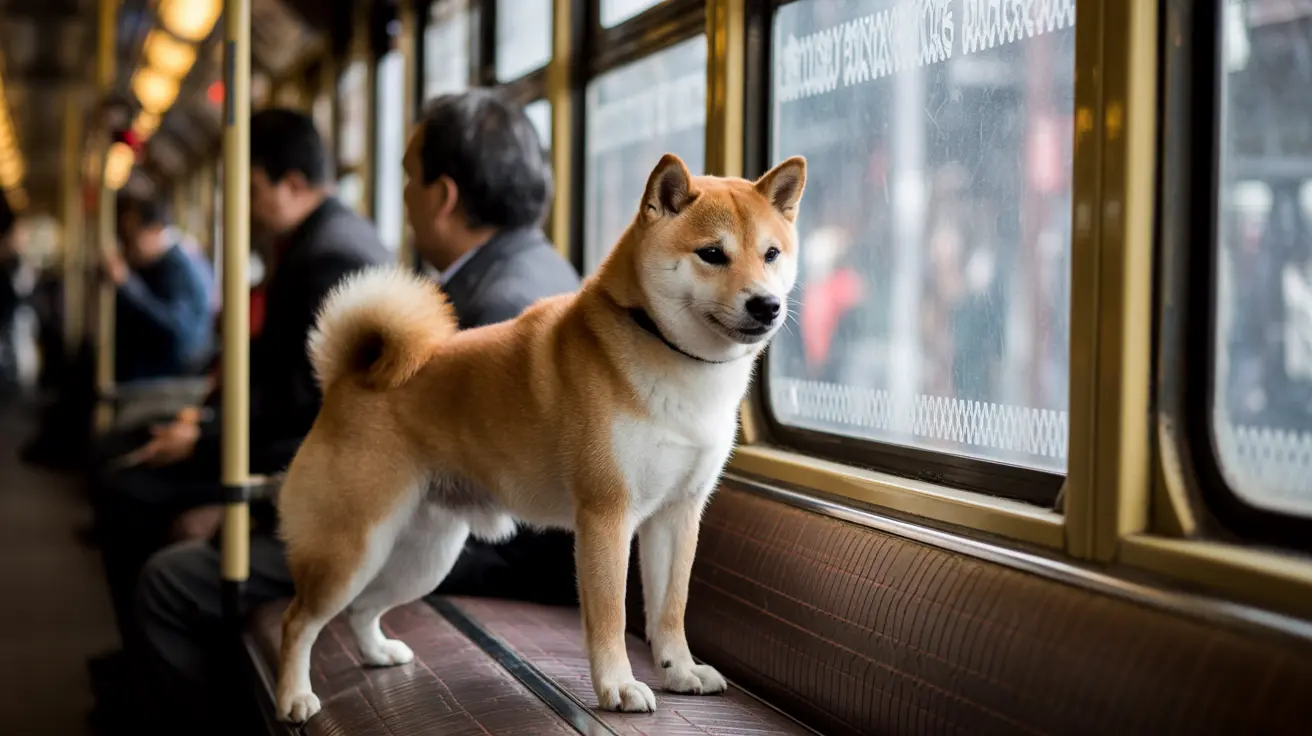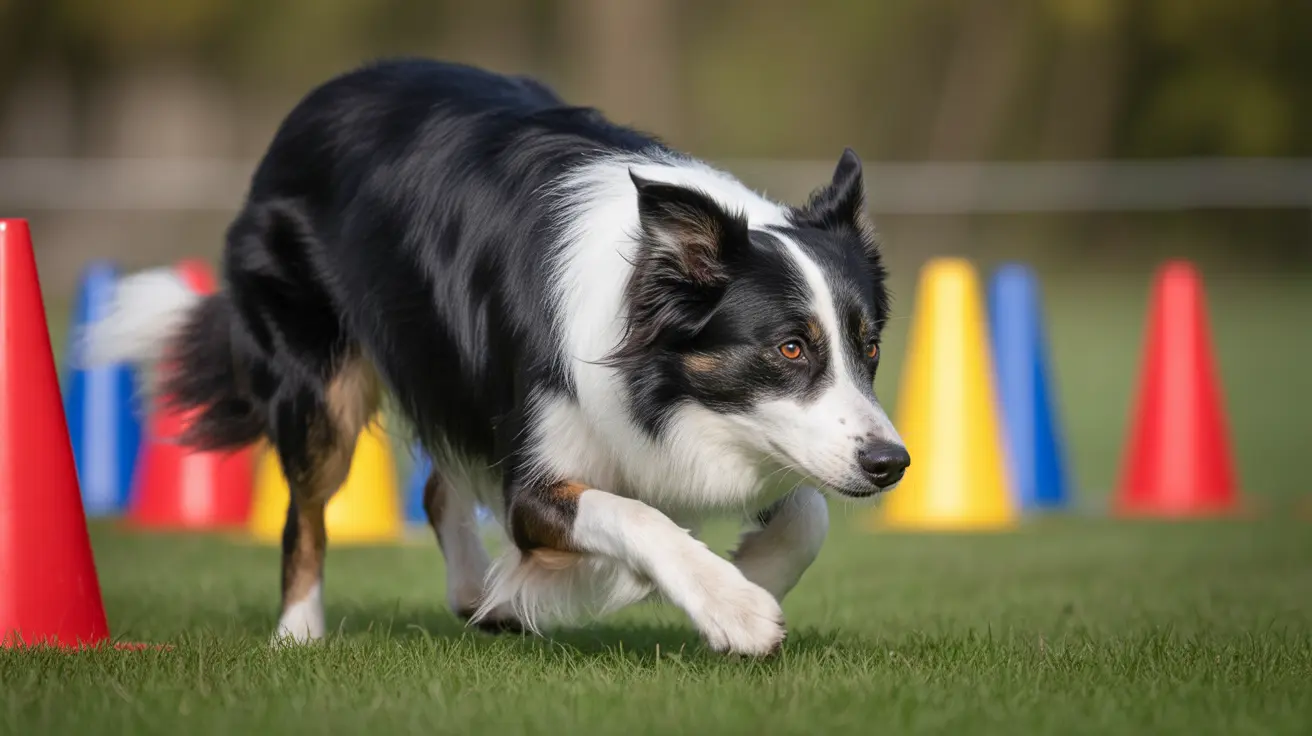Stray Dog Commuting Public Transportation Istanbul: How Boji Became the World's Smartest Commuting Canine
In the bustling metropolis of Istanbul, where millions of commuters navigate the intricate web of public transportation daily, one extraordinary passenger stands out among the crowds. Meet Boji, a remarkable stray dog who has independently mastered Istanbul's complex transit system, demonstrating an unprecedented level of canine intelligence and urban adaptation. This large, friendly canine has captured hearts worldwide by seamlessly traveling across metro lines, trams, buses, and trains with the precision of a seasoned commuter.
Boji's incredible story goes far beyond a simple tale of a wandering dog – it represents a fascinating intersection of animal cognition, urban planning, and the unique relationship between humans and animals in metropolitan environments. His ability to navigate one of the world's most complex transportation networks has sparked conversations about animal intelligence, urban wildlife adaptation, and how cities can coexist harmoniously with their four-legged residents.
This comprehensive exploration delves into Boji's remarkable commuting abilities, the cognitive science behind his navigation skills, and the broader implications of his story for urban animal management and public transportation policies worldwide.
Boji's Daily Commuting Routine: A Masterclass in Urban Navigation
Every day, Boji embarks on an impressive journey that would challenge even experienced human commuters. This extraordinary stray dog covers approximately 28 kilometers daily, visiting around 30 different stations across Istanbul's vast transportation network. His routes aren't random wanderings – they demonstrate clear intentionality and planning that has amazed transportation officials and animal behaviorists alike.
Metro Istanbul employees have meticulously tracked Boji's movements, discovering that his travel patterns follow specific routes with remarkable consistency. He demonstrates an understanding of timing, knowing when trains arrive and which platforms to use for his intended destinations. This level of spatial awareness and temporal coordination suggests cognitive abilities far beyond what most people attribute to stray animals.
The Polite Passenger: Boji's Impeccable Transit Etiquette
What sets Boji apart isn't just his navigation skills – it's his exemplary behavior as a public transportation passenger. He waits patiently at platforms, allowing passengers to exit before boarding, much like any courteous commuter would. Once aboard, Boji finds available seats calmly and settles in for his journey without causing disturbance to other passengers.
This polite behavior has endeared him to regular commuters who have come to expect and appreciate his presence. His gentle demeanor and respectful conduct challenge common misconceptions about stray animals and demonstrate how intelligent animals can adapt to human social structures when given the opportunity.
The Science Behind Canine Urban Navigation
Boji's remarkable abilities highlight the sophisticated cognitive capabilities that dogs possess for spatial memory and navigation in complex urban environments. Canines have evolved exceptional spatial processing skills that enable them to create detailed mental maps of their territories. In Boji's case, this natural ability has been adapted to navigate Istanbul's intricate public transportation system.
Dogs possess superior spatial memory compared to many other species, allowing them to remember specific locations, routes, and timing patterns. They can process multiple sensory inputs – visual landmarks, sounds, smells, and even vibrations – to create comprehensive mental maps of their environment. Boji's success demonstrates how these natural abilities can be applied to modern urban infrastructure.
Cognitive Mapping in Metropolitan Environments
The urban environment presents unique challenges and opportunities for animal navigation. Unlike natural habitats, cities offer consistent patterns, regular schedules, and predictable infrastructure that intelligent animals like Boji can learn to exploit. The regularity of public transportation schedules provides a framework that allows animals to develop reliable travel routines.
Boji's ability to understand platform locations, train directions, and transfer points suggests he has developed a sophisticated cognitive map of Istanbul's transportation network. This mental mapping demonstrates remarkable problem-solving abilities and adaptability that scientists are only beginning to fully understand.
Public Transportation Systems and Urban Wildlife Integration
Boji's story raises important questions about how public transportation systems can accommodate animals, particularly strays, in major metropolitan areas. Istanbul's relatively tolerant approach to Boji's presence represents a unique model of human-animal coexistence in urban transit environments.
Most public transportation systems worldwide have strict policies regarding animals, typically only allowing service dogs or small pets in carriers. However, Boji's case demonstrates that under certain circumstances, larger animals can integrate into public transit systems without causing disruption when they exhibit appropriate behavior.
Technology and Animal Monitoring in Transit Systems
In 2021, Metro Istanbul took proactive steps to ensure Boji's safety and monitor his movements by having him examined by a veterinarian and fitted with a microchip. This technological solution allows transit staff to track his location through a dedicated app, ensuring his wellbeing while respecting his freedom to travel.
This approach represents an innovative use of animal tracking technology in urban environments. The microchipping system provides valuable data about Boji's travel patterns while allowing authorities to intervene if necessary for his safety or the safety of passengers.
Global Perspectives: Commuting Animals in Other Cities
Boji's story isn't entirely unique – similar behavior has been observed with stray dogs in Moscow, who have also learned to use metro systems and follow fixed routes as commuting animals. These Moscow metro dogs demonstrate comparable navigation skills, using the subway system to travel between different areas of the city in search of food, shelter, and social opportunities.
The phenomenon of urban animals adapting to public transportation systems reflects the remarkable adaptability of certain species to human-created environments. These cases provide valuable insights into animal cognition and urban wildlife management strategies.
Comparative Analysis of Urban Animal Commuting
While Moscow's metro dogs and Istanbul's Boji share similar navigation abilities, their stories highlight different approaches to managing commuting animals in urban environments. The tolerance and even celebration of these animals in their respective cities demonstrates varying cultural attitudes toward urban wildlife and stray animal management.
Social and Cultural Impact of Urban Commuting Animals
Boji's presence has brought joy and wonder to countless commuters, transforming routine daily travels into opportunities for positive human-animal interactions. His story has become a symbol of resilience, intelligence, and the possibility of harmonious coexistence between humans and animals in urban spaces.
The positive reception of Boji's story reflects a growing appreciation for urban wildlife and recognition of animal intelligence. His daily commutes have created a sense of community among regular passengers who look forward to encountering this remarkable canine traveler.
Building Empathy and Understanding
Stories like Boji's play a crucial role in changing public perceptions about stray animals and urban wildlife. By demonstrating intelligence, adaptability, and social awareness, Boji challenges stereotypes and encourages more compassionate approaches to urban animal management.
Supporting and Managing Urban Commuting Animals
City authorities and animal welfare organizations face unique challenges when dealing with animals like Boji who have integrated themselves into public transportation systems. The key lies in balancing animal welfare, public safety, and the integrity of transportation services.
Successful management requires collaboration between transit authorities, veterinary professionals, and animal welfare organizations. Regular health monitoring, identification systems, and behavioral assessments are essential components of responsible urban animal management.
Best Practices for Urban Animal Integration
Boji's case provides valuable lessons for other cities facing similar situations. Key elements include regular veterinary care, microchipping for monitoring and identification, behavioral assessment to ensure public safety, and community education to promote positive interactions between humans and commuting animals.
Safe Interaction Guidelines for Commuters
While encountering animals like Boji on public transportation can be delightful, it's important for commuters to know how to interact safely and respectfully. Observing from a distance, avoiding feeding without permission from authorities, and reporting any concerning behavior are essential practices for maintaining positive human-animal interactions in transit environments.
Commuters should remember that even friendly animals like Boji are still wild or stray animals that require respect and appropriate boundaries. Gentle observation and appreciation, rather than direct interaction, ensure the safety and comfort of both humans and animals in shared spaces.
Frequently Asked Questions
How did Boji learn to use Istanbul's public transportation system?
Boji independently learned to navigate Istanbul's transit system through observation and repetition. His natural canine spatial memory and cognitive mapping abilities allowed him to understand routes, timing, and platform locations. Metro Istanbul employees tracked his movements and confirmed that his travel patterns show clear intentionality and planning.
Is Boji safe traveling alone on public transportation?
Yes, Boji has been examined by veterinarians and fitted with a microchip that allows Metro Istanbul staff to monitor his location through an app. He demonstrates excellent behavior on transit systems, waiting politely at platforms and finding seats calmly without disturbing other passengers.
How far does Boji travel each day on Istanbul's transit system?
Boji covers approximately 28 kilometers daily, visiting around 30 different stations across Istanbul's transportation network. His routes include metro, trams, buses, and trains, demonstrating remarkable navigation skills across multiple transit modes.
Are there other dogs around the world that use public transportation?
Yes, similar behavior has been observed with stray dogs in Moscow who have learned to use the metro system and follow fixed routes as commuting animals. These cases demonstrate the remarkable adaptability of certain dogs to urban environments and human-created infrastructure.
What makes Boji's commuting behavior so remarkable?
Boji's behavior is extraordinary because it demonstrates advanced cognitive abilities including spatial memory, temporal coordination, and social awareness. His ability to understand transit schedules, platform locations, and proper passenger etiquette suggests intelligence levels far beyond typical expectations for stray animals.
How do other commuters react to Boji on public transportation?
Commuters have embraced Boji's presence, finding joy and wonder in encounters with this remarkable canine traveler. His polite behavior and gentle demeanor have made him a beloved figure among regular passengers who appreciate his presence during their daily commutes.
What can other cities learn from Istanbul's approach to Boji?
Istanbul's approach demonstrates the importance of monitoring animal welfare through technology like microchipping, regular veterinary care, and community tolerance. The key is balancing animal welfare, public safety, and transit system integrity through collaborative efforts between authorities and animal welfare organizations.
Conclusion
Boji's remarkable story represents far more than an amusing tale of a clever dog – it embodies the profound intelligence and adaptability that animals can demonstrate when given the opportunity to thrive in urban environments. His mastery of Istanbul's complex public transportation system challenges our understanding of animal cognition and highlights the potential for harmonious human-animal coexistence in metropolitan settings.
As cities worldwide grapple with urbanization and wildlife management challenges, Boji's success offers valuable insights into innovative approaches that prioritize both animal welfare and public safety. His story reminds us that with understanding, tolerance, and proper management, even the most unlikely urban residents can become cherished members of our daily communities, enriching the lives of millions of commuters one journey at a time.






